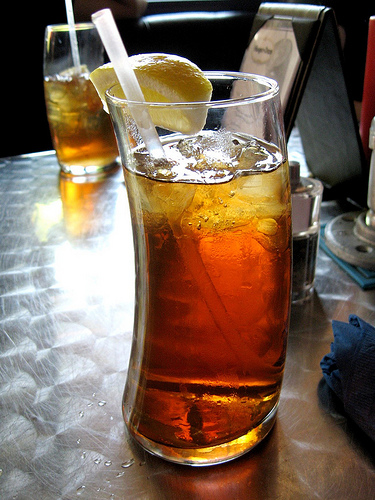Part 2 of Chapter 3 of Runaway Eating

Keira Knightley in the dress that sparked the rumors
Eating problems tend to run in families. If your parents or siblings have issues, you’re more likely to have them. Genetic factors, environmental stressors, or a dysfunctional family environment all play a key.
Let’s talk about genes first. Back when the tabloids wrote about Keira Knightley being anorexic, she denied it, to People magazine.
Whatever people say about my weight they are all wrong. Hollywood is about the way you look, and I don’t think that’s the healthy thing for anyone. But, if you’re strong and comfortable with yourself, then you’re going to be fine.
The star had shown up to a film premier with a low-cut, backless bronze Gucci dress. (When they say low-cut, it’s low-cut. It goes down to her belly button.) Her rail thin figure sparked many concerns and gossip.
While saying that there was nothing to worry about, Knightley did add that her family had a history of anorexia. Her grandmother and great-grandmother had suffered from the condition, and she also had a lot of friends who had the condition.

Nicole Richie, another rail thin celebrity suspected at some point to have an eating disorder
Her mother, as reported to Times, later shot down the rumor by telling the press that her daughter is like her father.
She has always been thin. She’s her daddy’s daughter, with his long body… [he] was much, much thinner than Keira. When he was Keira’s age, he had to drink milk with honey and eggs, and go training and training and training, just to be a normal weight.
She eats like a horse. I always want to apologise because she can eat anything that she wants and she does not put on weight.
Thus making the rest of us jealous.
The tendency to have an eating disorder or at least suffer from runaway eating can be passed genetically. Families of women with diagnosed eating disorders tend to have high rates of eating disorders. It follows that runaway eating may be passed genetically.
 However, it’s hard to know whether runaway eating is in part a product of genetics while also being in part a product of the environment. Some research indicates that 5-80% of a risk lies in the genes. Environmental factors are 20-50%. The relationship is quite complex.
However, it’s hard to know whether runaway eating is in part a product of genetics while also being in part a product of the environment. Some research indicates that 5-80% of a risk lies in the genes. Environmental factors are 20-50%. The relationship is quite complex.
For example, you might have the genes, but the tendency will only arise when certain environmental factors come into play. It can be something as benign as a wedding, or as serious as coping with a divorce. one stressor is unhealthy dieting. Someone who gets the idea that dieting can help her have a better life can start a diet and then eventually develop an eating disorder.
Disordered eating may also be related to family of origin. Maybe your family placed great importance on control or you had OCD tendencies. Or told you that certain emotions were forbidden, like anger.
 Or maybe your parents poked into your life, trying to make you live your life how they want you to live your life. Or maybe your parents placed great importance on physical attractiveness, often dieting and exercising while pushing you to do the same.
Or maybe your parents poked into your life, trying to make you live your life how they want you to live your life. Or maybe your parents placed great importance on physical attractiveness, often dieting and exercising while pushing you to do the same.
The authors speculate that if you are a bingeing runaway, your parents could have been distant. They may have expected a lot from you.
There really is no clear-cut division, however. Remember that.
You also have individual risk factors, depending on your personal characteristics.
Someone with a history of being overweight may be familiar with diets and dieting. Though it’s difficult to lose the weight, losing weight is extremely important to you.
Similarly, someone with a history of bulimia or anorexia has a higher chance that the eating disorder will recur. Complete recovery is uncommon though possible, and many women continue to be preoccupied with food.
 Or someone with low-esteem might not like herself. She feels bad about herself and her body. She might believe that thinness will make her more lovable, more worthwhile. I know a beautiful woman and mother of two beautiful daughters who believes that she has to stay skinny so that her husband will still love her. Her husband is very loving, and the chances that he will actually leave her are nil. But there it is.
Or someone with low-esteem might not like herself. She feels bad about herself and her body. She might believe that thinness will make her more lovable, more worthwhile. I know a beautiful woman and mother of two beautiful daughters who believes that she has to stay skinny so that her husband will still love her. Her husband is very loving, and the chances that he will actually leave her are nil. But there it is.
Some people believe that their self-worth is tied to good looks and thinness. This is common among those in the show biz. Their careers depend on them staying slim and beautiful. Rarely, if ever, will you see a fat model/talk show host/TV announcer unless she’s Oprah. (But then she’s trying to lose the weight because she hates not being able to fit into clothes, etc etc.) No doubt, these women are particularly vulnerable because their livelihoods depend on their attractiveness.
That’s also one reason why no one would really be surprised if Nicole Richie or Keira Knightley actually turned out to be anorexic.
 During menopause, the risk of obesity rises owing to the changes that occur at this point. Women put on inches around their waists. plus the process is stressful, what with the hot flashes and all. No wonder they turn to food for comfort.
During menopause, the risk of obesity rises owing to the changes that occur at this point. Women put on inches around their waists. plus the process is stressful, what with the hot flashes and all. No wonder they turn to food for comfort.
Another thing: those with disordered eating or a clinically diagnosed eating disorder tend to be depressed. One fifth of all people (or women?) experience clinical depression at one point. It comes with sadness, low mood, lack of pleasure in usual activities, and thoughts of suicide to name a few.
80-90% of eating disorders are triggered by anxiety or tension. Some try to relieve stress by not eating, or eating large amounts of food. Bulimics eat, then feel anxious until purge. Many live in a perpetual state of anxiety, afraid of food, gaining weight, and a lot of other things.
 Then there are the perfectionists. They are those who, no matter how much they have achieved, never feel happy with themselves or others. There is the normal drive for success, then there is the extreme that is unhealthy. Goals are unrealistic. There was the young lady yearning for perfection. I saw a list of goals. She wanted to reach 54 pounds. Very very unrealistic. She won’t reach it ever, because she’ll die or slip into a coma before she reaches it. To this type of person, mistakes equal disaster.
Then there are the perfectionists. They are those who, no matter how much they have achieved, never feel happy with themselves or others. There is the normal drive for success, then there is the extreme that is unhealthy. Goals are unrealistic. There was the young lady yearning for perfection. I saw a list of goals. She wanted to reach 54 pounds. Very very unrealistic. She won’t reach it ever, because she’ll die or slip into a coma before she reaches it. To this type of person, mistakes equal disaster.
Some people also have poor problem-solving skills. Some have difficulty facing their problems. They can’t make connections between the problem and the actual solution. They avoid confrontation. Instead of dealing with the problem head on, they abuse food as a response.
There are other personality factors, like the tendency to starve oneself of affection or being very disciplined and self-controlled. Or the tendency to live life with your emotions on a roller coaster ride. These factors differ from person to person. This brings us to a catalyst: dieting.

 While some restricting eaters stop feeling hungry, most have the strong desire to eat and think about food all the time. The other interesting thing to them is being thin and in control. They may check the mirror and buy clothes that are too small, hoping to someday fit into them.
While some restricting eaters stop feeling hungry, most have the strong desire to eat and think about food all the time. The other interesting thing to them is being thin and in control. They may check the mirror and buy clothes that are too small, hoping to someday fit into them. What can restricting do to someone’s body? Vital functions will slow down to conserve energy. Metabolism slows down. Blood pressure drops. You might feel light-headed, dizzy, or cold. Or all three. If body fat drops low enough, your period might stop. You won’t be able to have a baby, because your body realizes that your food supply is too low to support another life. If you are already pregnant, there’s an increased risk of miscarriage, premature birth, and birth defects. You can also get osteoporosis.
What can restricting do to someone’s body? Vital functions will slow down to conserve energy. Metabolism slows down. Blood pressure drops. You might feel light-headed, dizzy, or cold. Or all three. If body fat drops low enough, your period might stop. You won’t be able to have a baby, because your body realizes that your food supply is too low to support another life. If you are already pregnant, there’s an increased risk of miscarriage, premature birth, and birth defects. You can also get osteoporosis. On the other hand, you may also suffer from anxiety, OCD tendencies, perfectionism, and hopelessness. Each feeds the other. Your feelings feed the disordered eating, while the eating feeds the feelings. It’s a deeply destructive cycle.
On the other hand, you may also suffer from anxiety, OCD tendencies, perfectionism, and hopelessness. Each feeds the other. Your feelings feed the disordered eating, while the eating feeds the feelings. It’s a deeply destructive cycle. Part 1 of chapter 1 of Runaway Eating: Not for Teenagers Only
Part 1 of chapter 1 of Runaway Eating: Not for Teenagers Only The book Runaway Eating by Cynthia M. Bulik, Ph.D., and Nadine Taylor, M.S., R. D. takes a good look at this trend. They also include an 8 point plan to help conquer this kind of thinking. (I will not go through the 8 point plan because there’s a lot of books to read.) This book, is, however, designed to help the reader make informed decisions about health, and is not a medical manual by any means. And if you are suffering from an eating disorder, it’s best to seek a doctors help rather than to turn to a book alone.
The book Runaway Eating by Cynthia M. Bulik, Ph.D., and Nadine Taylor, M.S., R. D. takes a good look at this trend. They also include an 8 point plan to help conquer this kind of thinking. (I will not go through the 8 point plan because there’s a lot of books to read.) This book, is, however, designed to help the reader make informed decisions about health, and is not a medical manual by any means. And if you are suffering from an eating disorder, it’s best to seek a doctors help rather than to turn to a book alone. Runaway eating runs rampant through society. However, using food as a solution for your problems is no solution at all, as women find out.
Runaway eating runs rampant through society. However, using food as a solution for your problems is no solution at all, as women find out.